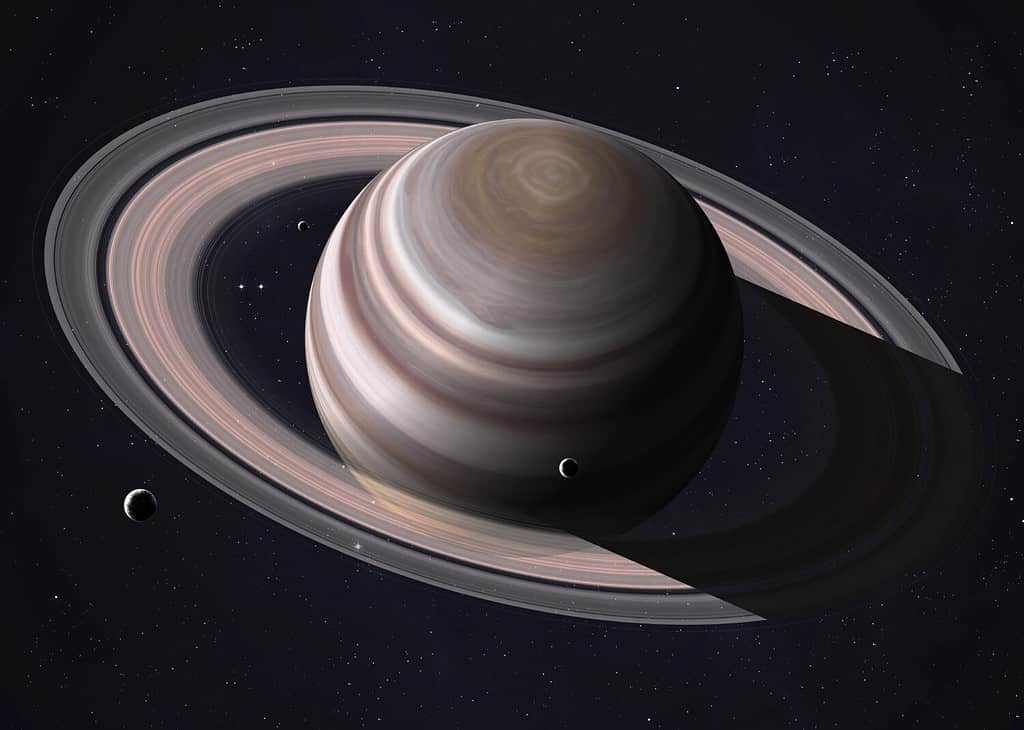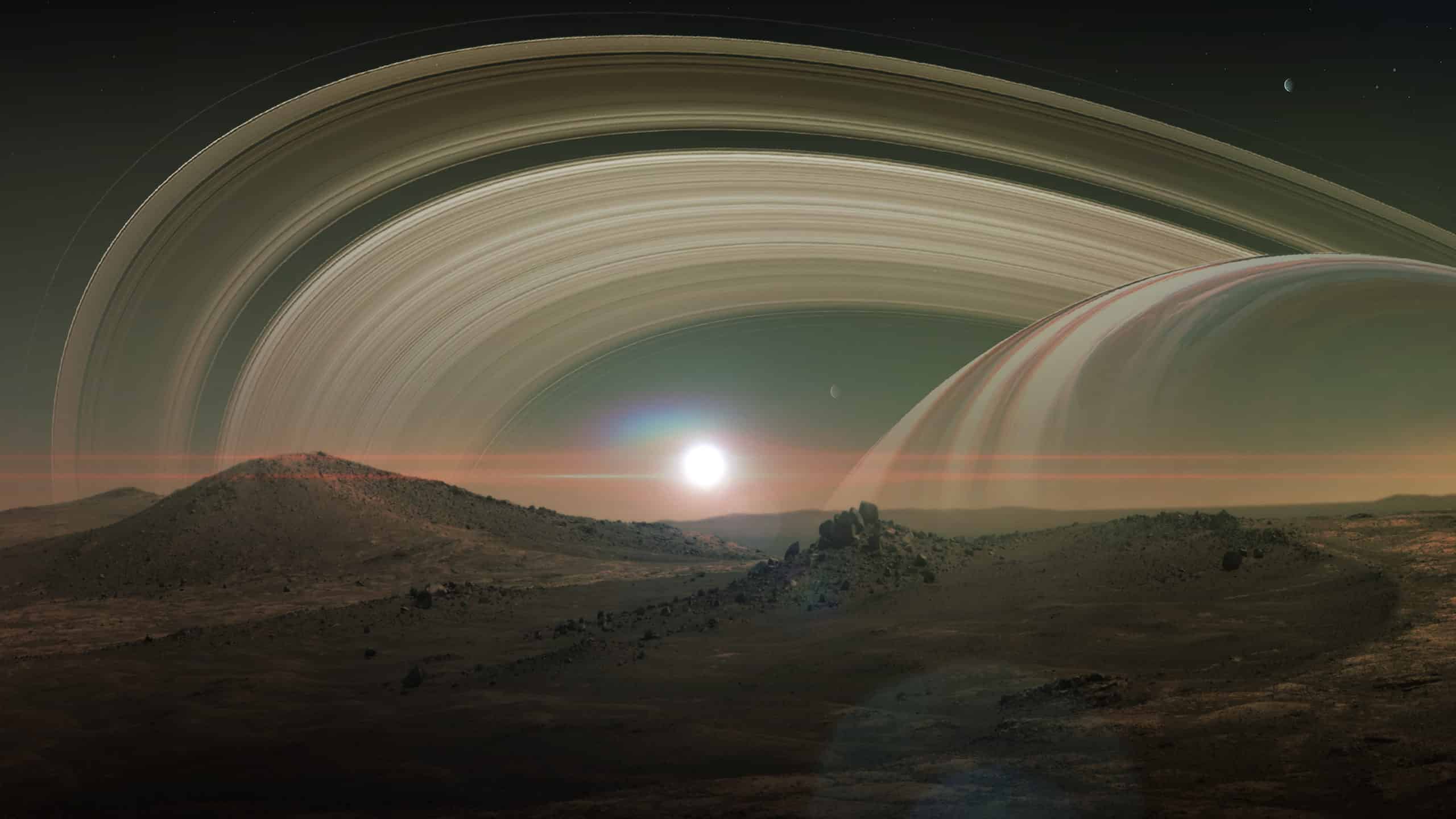Saturn is one of the most iconic planets in the solar system. This planet holds unique symbolism and vast wonders in the media, astrology, and astronomy. The sixth planet from the Sun is ginormous and filled mostly with hot air. It’s unable to support life as we know it, although some of its 82 moons (53 known and 29 awaiting confirmation) might have sustainable living conditions.
Few space missions have visited Saturn, as the planet is mostly made up of toxic gases and lacks solid ground to land on. Saturn’s gravity is far too strong for humans to visit. However, this only makes the gas giant more fascinating to astronomers and stargazers. And thankfully for them, Saturn will be brighter and easier to spot when it moves closer to Earth this summer.
Keep reading to learn all about Saturn’s orbit and its upcoming close approach to Earth.
Understanding Saturn’s Orbit
Saturn is the sixth planet from the Sun at a distance of about 886 million miles (1.4 billion km). Mercury, Venus, Earth, Mars, and Jupiter exist between the two. After Saturn, Uranus and Neptune are next in line.
At 9.5 astronomical units (AU) from the Sun, Saturn has a radius of 36,183.7 miles (58,232 km) and is nine times wider than Earth. For size comparison, NASA likens the Earth to a nickel and Saturn to a volleyball. When it’s closest to Earth, Saturn is about 746 million miles (1.2 billion km) away. The planet is illuminated by the Sun, reflecting its light and appearing bright from our view here on Earth.
Saturn’s days are 10.7 hours long, meaning it only takes the planet that long to rotate. A complete orbit for Saturn is about 29.4 Earth years, marking just one year in Saturnian time.

Saturn is known for its many rings, which can be seen through a telescope.
©Vadim Sadovski/Shutterstock.com
The Significance of Opposition
In astronomy, “opposition” refers to the positioning of planets in relation to each other, the Sun, the Moon, or other astronomical objects. For example, two planets are in opposition when they’re on completely opposite sides of the celestial sphere when orbiting the Sun.
When Earth is directly between Saturn and the Sun, Saturn is said to be “in opposition” or “at opposition.” That means we can spot Saturn rising in the West when the Sun sets in the East. At this time, Saturn is exceptionally bright due to the Sun’s reflection. This typically occurs every year.
Opposition is a crucial time for astronomers to conduct research on planets. Such celestial events offer optimal viewing conditions. Scientists can better study the planet’s features and surface details because they’re more pronounced when in opposition.
It’s also an exciting time for stargazers to observe the planet, as it is at its brightest point above the horizon during this period. When Saturn is in opposition, it typically appears like an oval light — or a large, extra-bright star.
Predicting Saturn’s Closest Approaches
To predict Saturn’s closest approaches to Earth, astronomers must first study its orbital characteristics. Saturn follows an elliptical orbit around the Sun. All planets follow this type of orbit, but Saturn’s orbit eccentricity is 0.0520, while Earth’s is 0.0167. This elongated orbit causes its distance to the Sun to vary throughout its orbital journey.
Saturn’s orbit directly impacts its position in relation to other planets within the solar system. Through research, astronomers have discovered that Saturn is in opposition around once an Earth year — or about every 378 Earth days.
Saturn’s Closest Approach in 2024
Saturn will be at opposition on August 27, reaching its closest approach to Earth. It will appear the brightest between August 18 and September 11, as the Sun will fully illuminate the planet’s face.
At its opposition, Saturn will be 73 light-minutes (about 8.8 AU) away from Earth. It will remain visible in the night sky throughout the rest of the year and into February 2024. Saturn rises when the Sun sets, so the best time to view the planet is in the evening and throughout the night.

You can observe Saturn with your naked eye, but tools like binoculars and telescopes provide better viewing opportunities.
©True Touch Lifestyle/Shutterstock.com
Capturing the Moment: Tips for Observing Saturn’s Close Approach
You can observe Saturn during its opposition with your naked eye, as it will appear like a large, bright star. However, using tools like binoculars and telescopes will help you better see its features. If you want to see the planet’s rings (one of its most prominent characteristics), you’ll need a telescope.
The best time to view Saturn during its opposition is late at night (it’s at its highest point around midnight). Choose an open area without any view obstructions, away from city lights. Of course, check the weather before you plant your viewing opportunity, as a clear sky is critical for optimal viewing.
As the second largest planet in the solar system, Saturn has a strong allure and is touted for its celestial wonder. If you want to see Saturn in all its glory this year, mark your calendars for August 27!
Thank you for reading! Have some feedback for us? Contact the AZ Animals editorial team.








